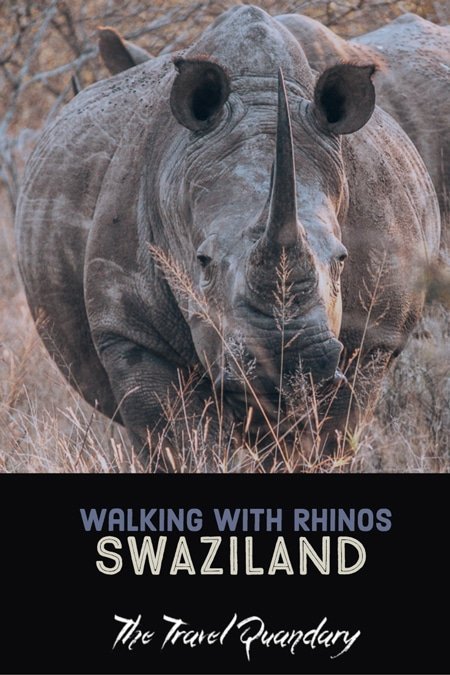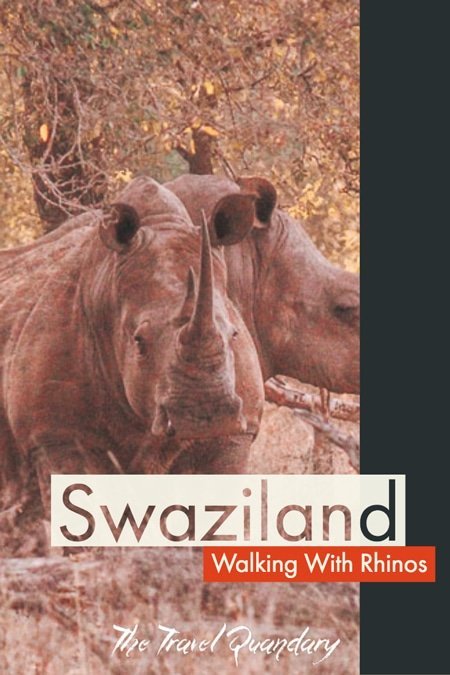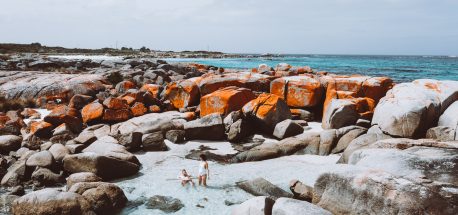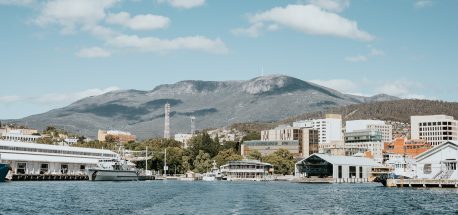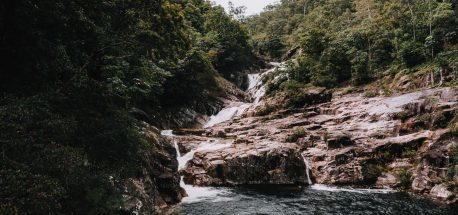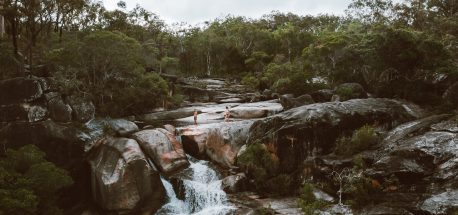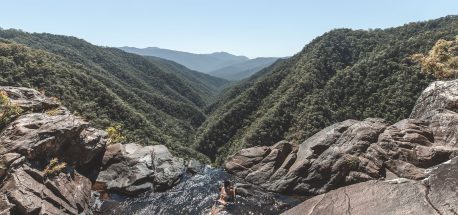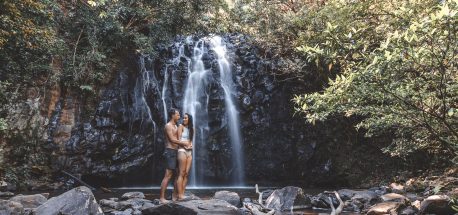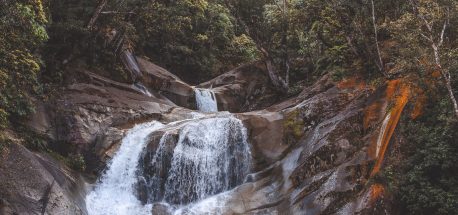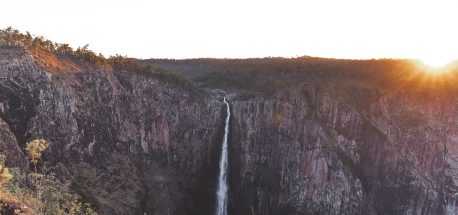“A nature walk in Hlane Royal National Park”
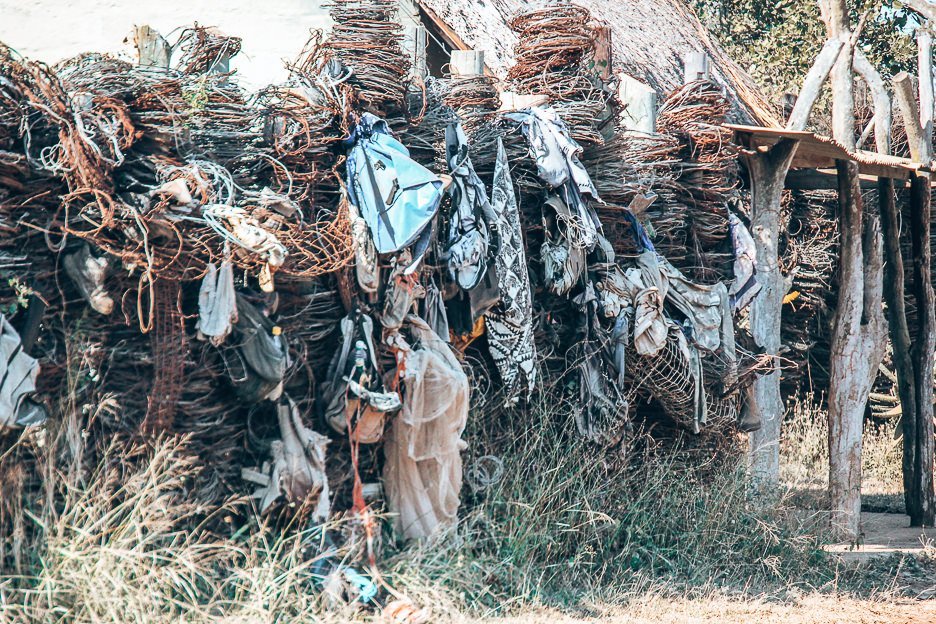
Reading the notes on my Intrepid Travel itinerary, such activity doesn’t sound ominous at all.
I’m in Swaziland; a small, landlocked nation in Southern Africa with a population of approximately 1.3 million. Sharing borders with South Africa and Mozambique, I’m here to visit Hlane Royal National Park. The reserve was formerly a private hunting ground for the Swazi royals who christened the national park “Hlane”, meaning ‘wilderness’. Today, the national park is Swaziland’s largest protected area. Hlane is home to lions, elephants and bird life, including the highest density of nesting white-backed vultures in Africa. But it’s the Southern White Rhino that I’m eager to see. It’s here at Hlane Royal National Park that visitors have the opportunity to take a walk with rhinos in Swaziland.
We drive through the national park’s gates, which are constructed from recycled materials of rhinoceros traps found by park rangers. Our guide explains that despite its size, Swaziland is a proud country. These days, the nation is leading the way in rhino protection and welfare across Africa. As early as the 1960s, Swaziland began conservation efforts of the land and its wildlife. According to the International Union for the Conservation of Nature, rhinoceros poaching has seen 5,940 African rhinos killed for their horns over the past decade. With poaching on the rise in Africa, Swaziland has bucked this trend having lost only three rhinos in the last two decades (two in 2011 and one in 2014). In comparison, Kruger Park in South Africa which is home to the largest population of rhinos in Africa, loses (on average) two rhinos per day to poachers.
The Southern White Rhino is one of the heaviest land animals. An adult male can stand at over 180 centimetres in height, four metres in length and weigh around two tonnes. And we’re going behind the fence with them! The group descends from the safety of our safari truck for our briefing. Our walk begins with a few simple rules. Follow the directions of our local guides; one at the front, one at the rear. Walk in single file. Should we come across any rhinos, stay still and be quiet. Simple, right? The lead guide takes us into the wilderness. Along the way, he points out local fauna, insects and birds. We pass by impala and zebra who all ignore us. They’re likely somewhat familiar with human scents now and are presumably on their way to the watering hole.
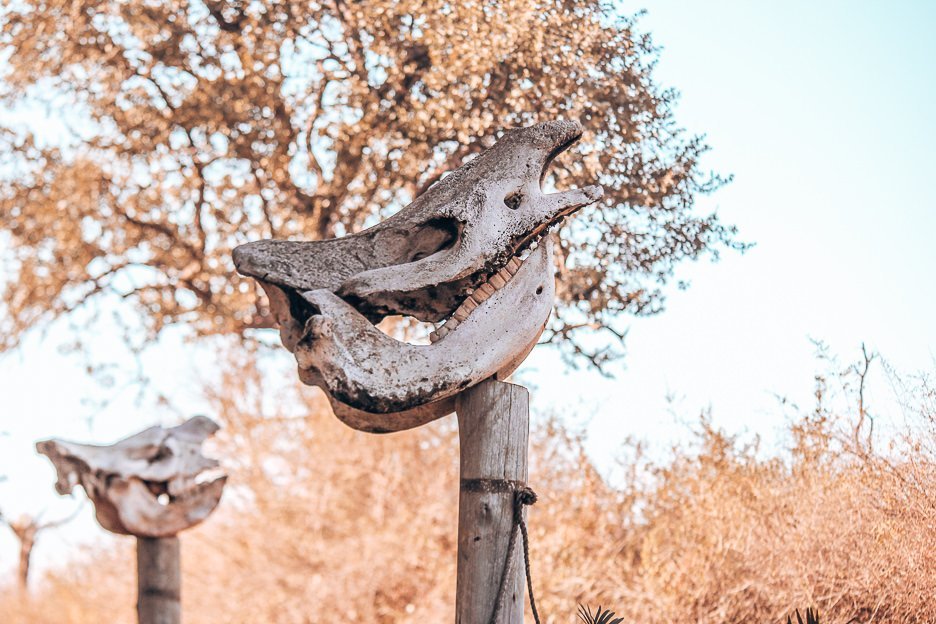
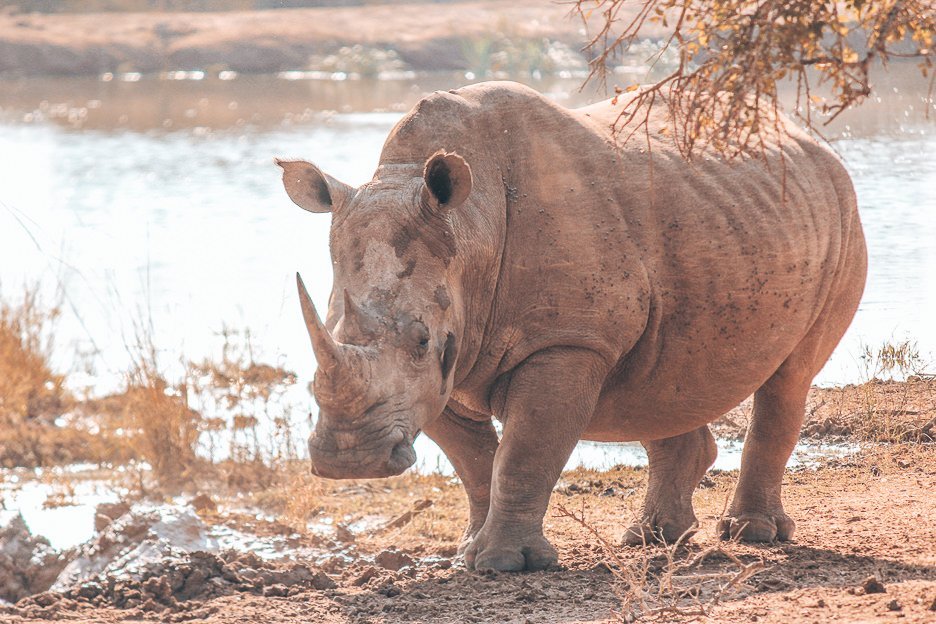
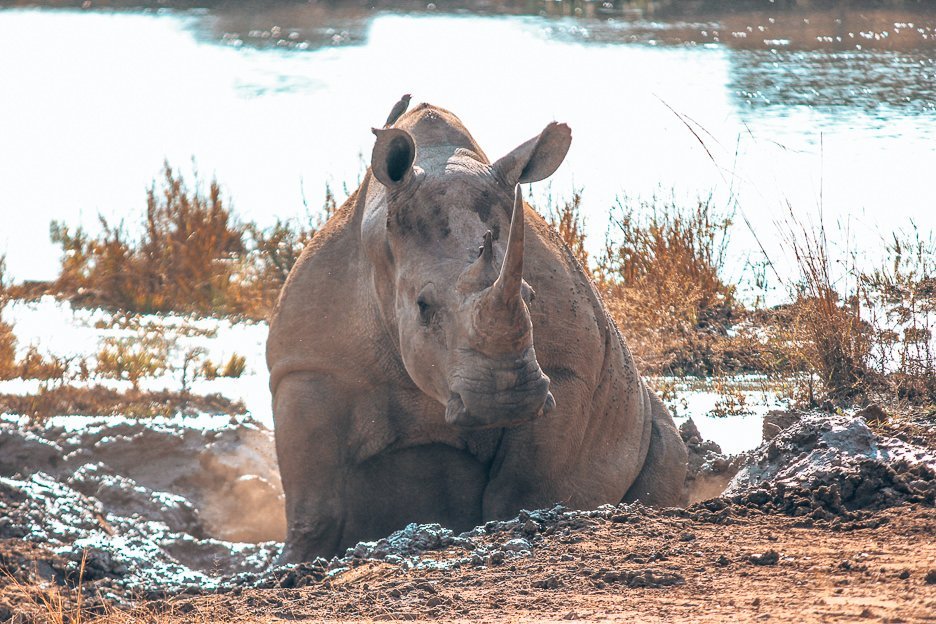
After walking for around 15 minutes, our guide spots three adult rhinos ahead of us. They’re approximately 25 metres away. Our group crouches down behind a log. After a quick scramble for our cameras, we peer over. The rhinos do not seem bothered by our presence. We’re told that the rhinos cannot see us. They have poor eyesight but this is compensated by an excellent sense of smell and hearing. So while it may seem that they have spotted our heads over the fallen tree, it is more likely that the scent of twelve two-legged animals has given our position away. It is truly spectacular to see these huge creatures so close up in the wild.
After observing their behaviour for several minutes, we leave our rhino friends behind to enjoy the setting sun. We continue our walk through the national park where our guide continues his lecture on the local birdlife. Suddenly, we hear some rustling in the bushes. Impala? No. Lion? Thank God, no! It’s the three rhinos! They seem to have followed us, tracking our journey via our smell or the noise. The rhinos emerge from the foliage and approach slowly. Their curious noses must have picked up an unfamiliar smell which required further investigation. Something tells me that they’d make excellent airport security dogs if not for their impractical size.
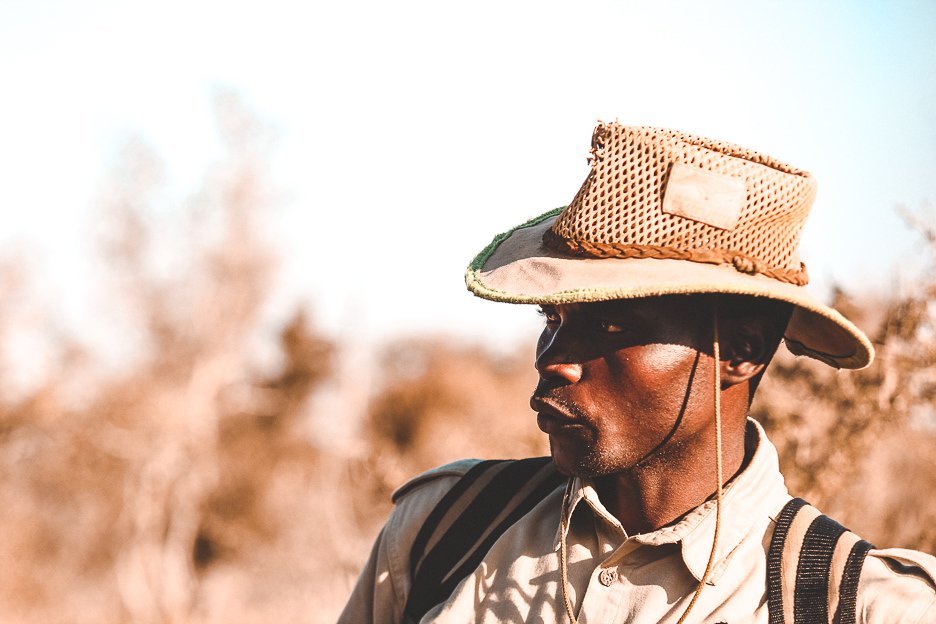
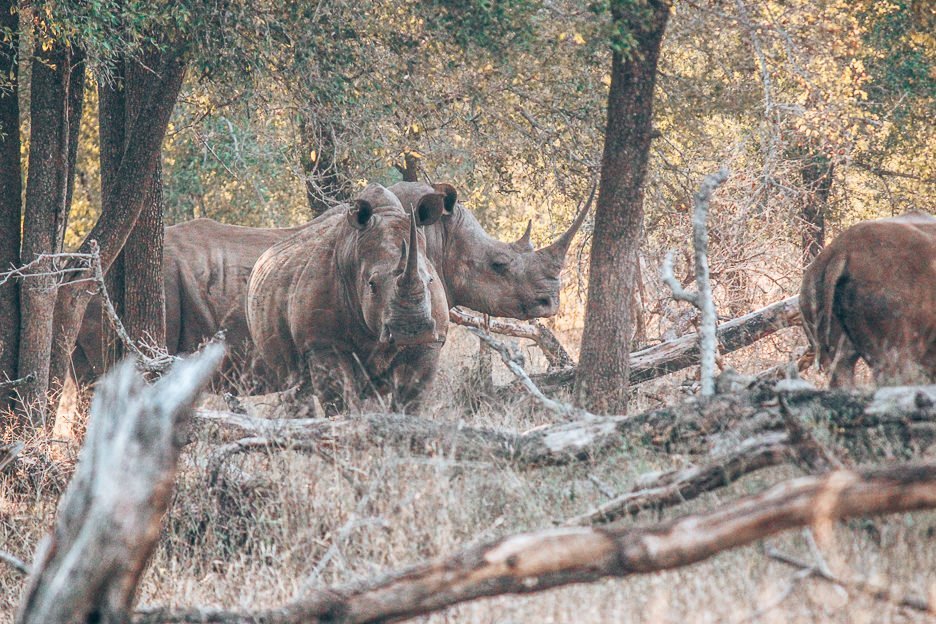
They’re barely four metres from the group before they stop in their tracks. We freeze. We stand very still, face-to-face with these giants of the savanna, taking refuge behind logs and trees and remaining ever so still. Our guide is only armed with a stick, however, he doesn’t seem too concerned that these magnificent animals are this close to us. I’m armed with only my camera. It will hardly stand as a means of self-defence should one of our newly acquainted horny friends decide to charge me down for invading his turf.
Our Mexican standoff with the rhinos is resolved when our guide throws his stick away from the group. Distracted, the rhinos turn and slowly chase the stick. Our group heads in the opposite direction, shuffling hurriedly but quietly to not draw any further attention to ourselves. As the African sun continues to drop below the horizon, the adrenaline subsides. It is a very humbling life experience here in the wild. We will relive this moment around the campfire tonight and remember this Swaziland safari for the rest of our lives.
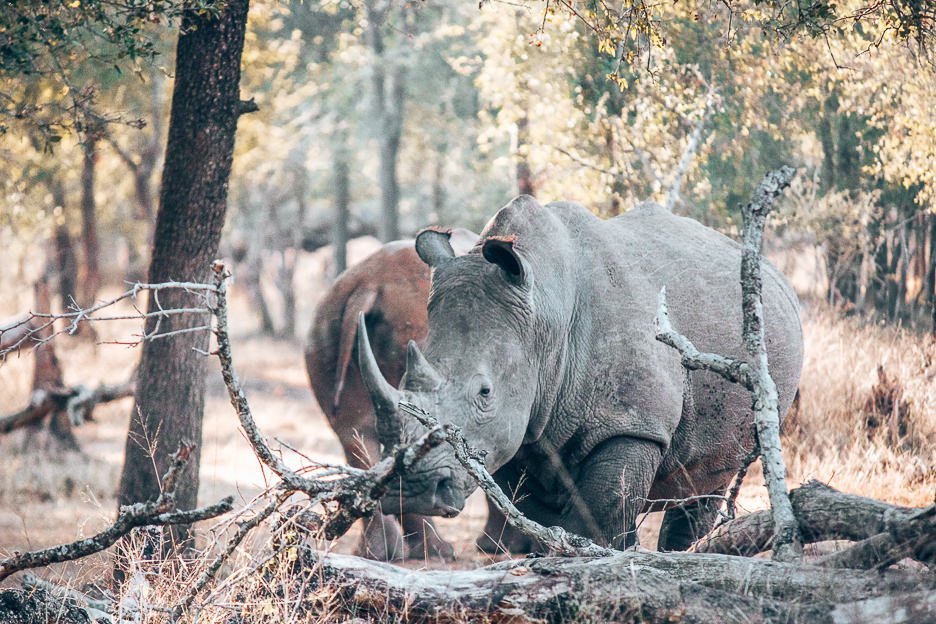
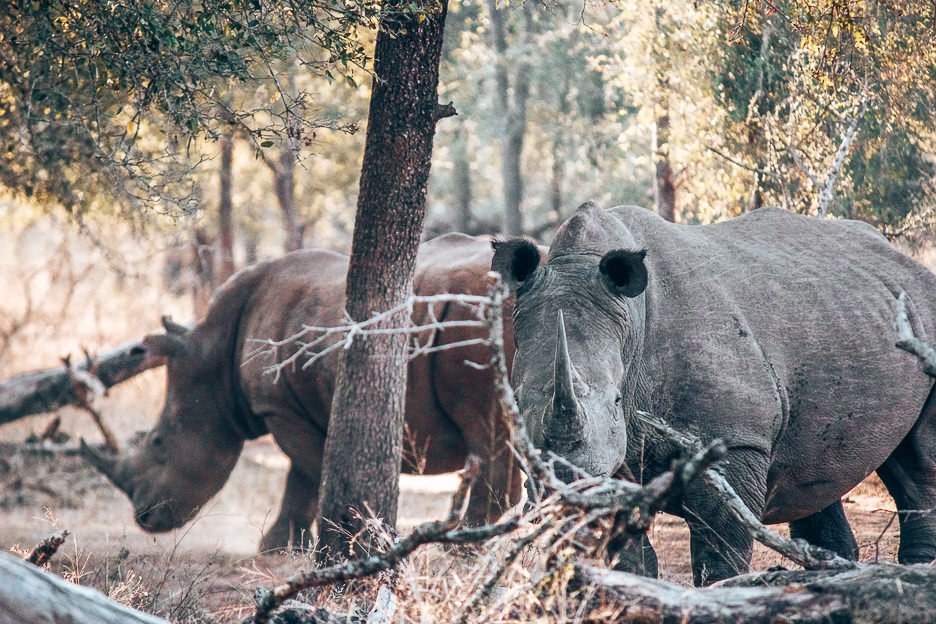
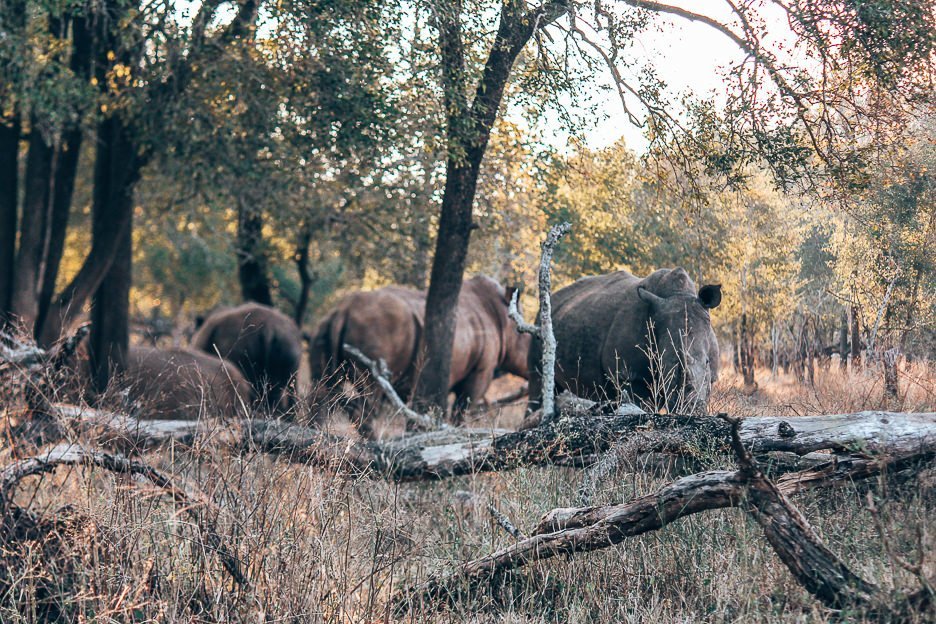
More information on walking with Rhinos in Swaziland
I travelled to Swaziland with Intrepid Travel on their 9 Day Kruger & Coast trip from Johannesburg to Durban which included this Swaziland safari. We stayed at Ndlovu Camp within Hlane Royal National Park. Whilst we chose the camping option, they also have huts and cottages available. Check out the following link for more information.
TIP: If you’re travelling to Swaziland from South Africa, be prepared for a queue at the passport office at the border. As we were travelling as a group, processing probably took longer than usual. Based on my experience, I would allow for 45 – 60 minutes for the border crossing.
Have you been on an adventurous wildlife safari? Share your thrilling tale with us in the comments below!
LIKE THIS POST? PIN IT AND SHARE IT!
